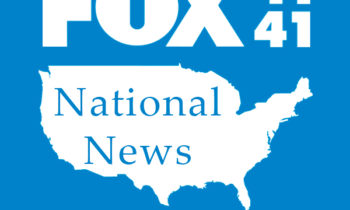
Over 58 million households went camping in 2022, spending $52 billion in the local communities where they visited.
Autumn has arrived, inviting everyone to enjoy outdoor activities like scenic driving, hiking, and camping. Old Man Winter anxiously paces back and forth on the horizon, desperate to push people back indoors with his colder temperatures.
He may be disappointed to discover many Americans plan to remain outdoors this year. Winter camping is heating up.
Millions of American Households Camp Annually
Kampgrounds of America (KOA) regularly conducts independent, non-biased research studies of the North American camper to examine trends in the outdoor hospitality market. Their 2023 report reveals camping makes up nearly one-third (32%) of the leisure travel market.
Since 2014, the number of families who camp three or more times a year has grown by 174%.
Why Has Camping Become Popular?
The KOA study found North American families expressing a hunger for new experiences, including culinary tourism and observing events like eclipses and meteor showers.
Half the participants said camping offers a more cost-friendly way to travel during an economic downturn. Further, they expressed a desire to connect with nature and each other during times of economic uncertainty. Respondents state that camping allows them to relax, blow off steam, and focus on their mental health.
As many as 40% of survey participants said the availability of Wi-Fi greatly influenced the decision to camp more. Glamping played its role, appealing to 38% of respondents, up sharply from only 26% in 2021.
Warming Trends in Winter Camping
KOA recently published its September 2023 research report on fall and winter camping trends. In that study, 38% of campers stated a definite intention of winter camping, compared to 17% last year. Another 27% said they will probably camp this winter.
Cabins and comfortable accommodations beyond tents play a significant part in the increase. Glamping and cabin campers increased from a little over 5 million households in 2021 to over 12 million in 2022.
Survey respondents stated that the benefits of winter camping include fewer crowds and breathtaking views in regions with snow. In some cases, winter camping means escaping to a warmer weather environment. For other survey participants, winter camping means an opportunity to experience unique recreational activities like skiing, snowshoeing, or snowmobiling.
KOA has over 500 locations across the United States and Canada. The study also accounts for other privately owned campgrounds, all levels of public parks, and camping in the backcountry. Americans are flocking to a combination of warm and cold weather destinations for winter camping.
Arizona
Campers visit Arizona for warmer temperatures, stunning red rock formations, and iconic destinations. Campers regularly stay near Sedona, Flagstaff, and Tucson. Many campers plan to admire the giant cacti in Saguaro National Park and the state’s crown jewel, the Grand Canyon.
California
Between California’s warm southern region and its colder northern region, campers may have very different experiences depending on their destination. Campers often stay near famous cities like San Diego and San Francisco. Other winter campers want to see natural wonders like Joshua Tree National Park, Sequoia National Park, and Redwood National & State Parks.
Colorado
Known for its beautiful mountain scenery, Colorado offers a cold-weather camping experience with excellent skiing opportunities. Visitors regularly camp near Denver and Colorado Springs. Natural wonders include Rocky Mountain National Park and Black Canyon of the Gunnison National Park.
Florida
Practically the polar opposite of Colorado, Florida attracts winter camping visitors due to its warm weather, beaches, and theme parks. Campers regularly stay near places like Orlando, Tampa, and Fort Lauderdale. Disney World, Kennedy Space Center, and Everglades National Park are popular attractions. Many birders enjoy Kissimmee and Myakka River State Park, not to mention the J.N. “Ding” Darling National Wildlife Refuge on Sanibel Island.
New Mexico
The Land of Enchantment contains various landscapes, from deserts to mountains. Campers often stay near cities like Alamogordo, Las Cruces, and Albuquerque. Popular attractions include the state’s three World Heritage Sites: Chaco Culture, Taos Pueblo, and Carlsbad Caverns National Park. Many campers plan to visit White Sands National Park, where they can scale rolling dunes and try sand sledding.
Virginia
The east coast state has beaches, forests, mountains, history, and politics. Campers regularly sleep near Shenandoah Valley, Virginia Beach, and Wytheville. Another popular winter camping spot is Fredericksburg, between Washington, DC, and Richmond. Shenandoah National Park provides scenic Skyline Drive and beautiful hikes through the forested ridges of the Blue Ridge Mountains.
Washington
Many campers come to Washington to revel in the beauty of nature’s solitude. The Pacific Northwest state is renowned for its lush forests and diverse geological features, including mountains, volcanoes, and coastlines. Visitors typically camp in Pasco, Spokane, Lynden, Leavenworth, or the Olympic Peninsula. The Cascade Mountains offer skiing and snowboarding.
Camping Is On The Rise, Even With A Falling Thermometer
Camping is no longer a three-season activity. Cold weather is waiting in the wings, but Americans are determined to enjoy winter camping, whether that means heading to a warmer climate or embracing the cold.

